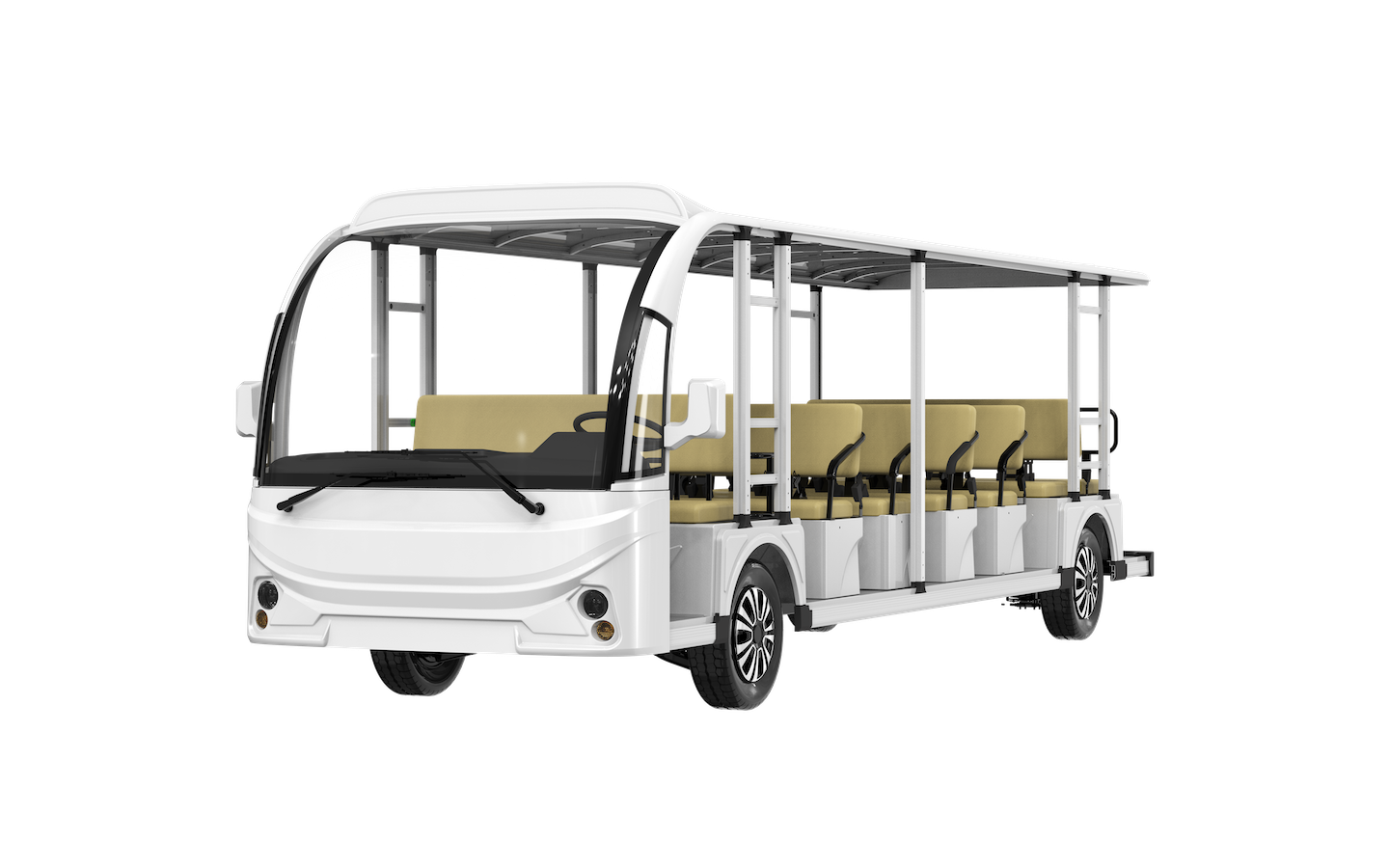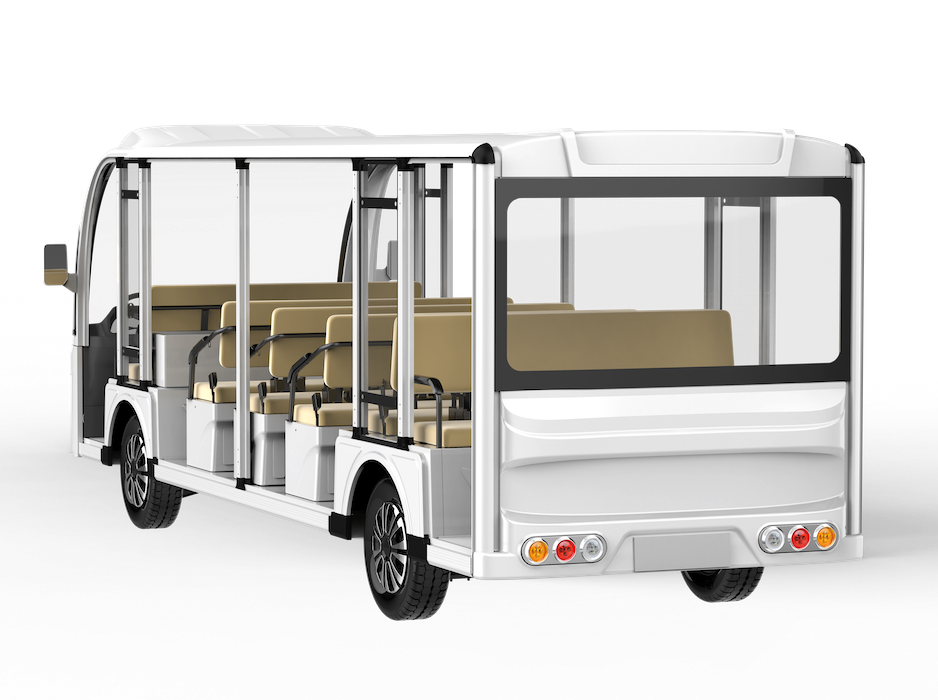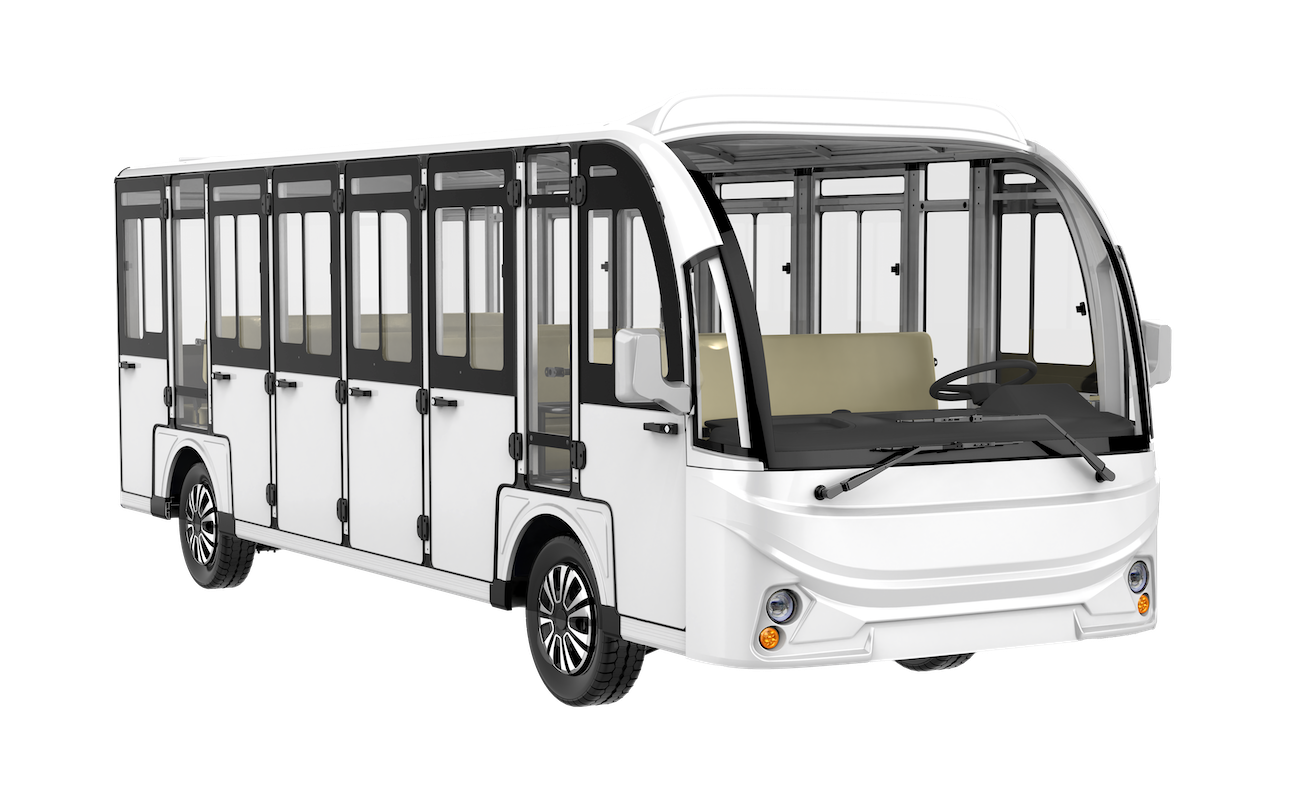Content Menu
● Safe Driving Practices
>> Avoid Sudden Acceleration and Braking
>> Allow for Cooling Periods
● Proper Charging Techniques
>> Monitor Battery Levels
>> Wait Before Charging
>> Charge in a Ventilated Area
>> Shorten Charging Time
● Tire Maintenance
>> Regular Tire Inspections
>> Monitor Tire Wear
● Utilizing Sun Protection Devices
>> Install Sunshades
>> Use Reflective Covers
● Frequently Asked and Questions regarding The Maintenance of Electric Sightseeing Vehicles in High Temperatures
>> 1. How does extreme heat affect the battery life of electric sightseeing vehicles?
>> 2. What are the best practices for storing electric sightseeing vehicles during the off-season in hot climates?
>> 3. How can I improve the cooling system of an electric sightseeing vehicle for better performance in hot weather?
>> 4. What are the signs of overheating in an electric sightseeing vehicle's motor?
>> 5. How often should electric sightseeing vehicles undergo maintenance checks during summer?
Electric sightseeing vehicles are increasingly popular for their eco-friendliness and efficiency, especially in tourist-heavy areas. However, maintaining these vehicles during high-temperature conditions is crucial for their performance and longevity. This article will explore various aspects of maintaining electric sightseeing vehicles in hot weather, focusing on safe driving practices, proper charging techniques, tire maintenance, and the use of sun protection devices.

Safe Driving Practices
Avoid Sudden Acceleration and Braking
In high temperatures, it is essential to drive electric sightseeing vehicles smoothly. Sudden acceleration and hard braking can lead to excessive current draw from the battery, which may cause overheating and reduce battery life. Instead, drivers should aim to accelerate gradually and decelerate smoothly. This not only conserves energy but also enhances passenger comfort, as abrupt movements can lead to a jarring experience. When approaching a stop, it is advisable to ease off the accelerator early and allow the vehicle to coast to a stop. This practice not only conserves battery power but also enhances the overall driving experience for passengers. Additionally, maintaining a steady speed can help optimize the vehicle's range, allowing for longer tours without the need for frequent recharging.
Allow for Cooling Periods
After prolonged driving or high-speed travel, it is important to allow the vehicle to cool down. Stopping the vehicle for a brief period enables both the vehicle and the battery to dissipate heat. This cooling period is vital to prevent overheating, which can lead to battery damage and reduced performance. However, it is crucial to avoid pouring water on the vehicle or battery to cool it down, as this can cause thermal shock and damage sensitive components. Instead, parking in a shaded area or using fans to circulate air can help lower temperatures effectively. Regularly scheduled breaks during long tours not only benefit the vehicle but also provide an opportunity for passengers to stretch and enjoy the surroundings.
Proper Charging Techniques
Monitor Battery Levels
Keeping an eye on the battery level is essential for maintaining the health of electric sightseeing vehicles. Drivers should avoid operating the vehicle when the battery is critically low, as this can lead to irreversible damage. Regularly checking the battery status ensures that the vehicle operates efficiently and reduces the risk of being stranded due to a depleted battery. Implementing a routine for battery checks before and after tours can help operators stay informed about the vehicle's condition. Additionally, using a battery management system can provide real-time data on battery health and performance, allowing for proactive maintenance.
Wait Before Charging
After a long drive in high temperatures, it is advisable to wait before plugging in the vehicle for charging. Allowing the vehicle to rest for at least an hour before charging helps to cool the battery and prevents overheating during the charging process. Charging a hot battery can lead to reduced efficiency and potential safety hazards. This waiting period can also be an excellent time for operators to conduct a quick inspection of the vehicle, checking for any signs of wear or damage that may need attention.
Charge in a Ventilated Area
When charging electric sightseeing vehicles, it is crucial to do so in a well-ventilated area. Charging in direct sunlight can exacerbate the heat generated by the battery, increasing the risk of overheating and even fire. A shaded or indoor location is ideal for charging, as it helps maintain a safe temperature for the battery and the vehicle. Additionally, ensuring that the charging station is equipped with proper cooling systems can further enhance safety during the charging process. Operators should also be aware of local regulations regarding charging stations, as some areas may have specific guidelines to follow.
Shorten Charging Time
In hot weather, the chemical reactions within the battery are more active, which can lead to faster charging times. It is recommended to reduce the charging duration by one to two hours compared to cooler months. A charging time of around eight hours is generally sufficient to ensure the battery is fully charged without overheating. Operators should also consider using smart chargers that can adjust the charging rate based on the battery's temperature and condition, optimizing the charging process and extending battery life.

Tire Maintenance
Regular Tire Inspections
Tires are a critical component of any vehicle, and their condition can significantly affect performance, especially in high temperatures. Regularly inspecting tire pressure and overall condition is essential. Overinflated or underinflated tires can lead to poor handling and increased wear. Drivers should check tire pressure frequently and adjust it as necessary to ensure optimal performance. In addition to pressure checks, operators should also look for signs of damage, such as cracks or bulges, which can compromise safety. Keeping a tire maintenance log can help track inspections and ensure that tires are replaced when necessary.
Monitor Tire Wear
In addition to checking tire pressure, it is important to assess the tread wear on tires regularly. Worn tires can compromise safety and efficiency, particularly in hot weather when road conditions can change rapidly. If tires show significant wear, they should be replaced promptly to maintain safe driving conditions. Operators should also consider rotating tires regularly to ensure even wear, which can extend the lifespan of the tires. Investing in high-quality tires designed for electric vehicles can also enhance performance and safety, particularly in challenging weather conditions.
Utilizing Sun Protection Devices
Install Sunshades
To combat the heat inside electric sightseeing vehicles, installing sunshades or using sun visors can be highly effective. These devices help block direct sunlight from entering the vehicle, thereby reducing the internal temperature. Keeping the interior cooler not only enhances passenger comfort but also reduces the strain on the vehicle's cooling systems. Operators should consider using reflective materials that can further enhance the effectiveness of sunshades. Additionally, educating drivers and staff on the importance of using these devices can help ensure they are utilized consistently.
Use Reflective Covers
In addition to sunshades, using reflective covers when the vehicle is parked can help keep the interior temperature down. These covers reflect sunlight and prevent the vehicle from heating up excessively, which can protect sensitive electronic components and prolong the life of the battery. Operators should invest in high-quality covers that are easy to install and remove, ensuring they are used regularly. Furthermore, promoting the use of these covers among staff can foster a culture of care and maintenance, ultimately benefiting the vehicles' longevity.
Maintaining electric sightseeing vehicles in high temperatures requires a proactive approach to ensure safety, efficiency, and longevity. By adopting safe driving practices, implementing proper charging techniques, conducting regular tire maintenance, and utilizing sun protection devices, operators can significantly enhance the performance and lifespan of their vehicles. As electric sightseeing vehicles continue to gain popularity, understanding and implementing these maintenance strategies will be essential for operators and manufacturers alike. By prioritizing vehicle care, operators can provide a safe and enjoyable experience for passengers while maximizing the benefits of electric transportation.

Frequently Asked and Questions regarding The Maintenance of Electric Sightseeing Vehicles in High Temperatures
1. How does extreme heat affect the battery life of electric sightseeing vehicles?
Extreme heat can accelerate the degradation of battery components, leading to reduced capacity and shorter overall lifespan. High temperatures can cause the electrolyte in batteries to evaporate, increasing the risk of thermal runaway, which can result in battery failure or fire. To mitigate these effects, it is essential to keep the battery cool and avoid charging it immediately after a long drive in hot conditions.
2. What are the best practices for storing electric sightseeing vehicles during the off-season in hot climates?
When storing electric sightseeing vehicles in hot climates, it is important to park them in a shaded or indoor area to protect them from direct sunlight. Additionally, ensure that the battery is charged to about 50% before storage, as this helps maintain battery health. Regularly check the vehicle for any signs of wear or damage, and consider using protective covers to shield it from dust and heat.
3. How can I improve the cooling system of an electric sightseeing vehicle for better performance in hot weather?
To enhance the cooling system, consider installing additional cooling fans or improving airflow around the battery and motor compartments. Regular maintenance of the cooling system, including cleaning any dust or debris from vents, can also improve efficiency. Using thermal insulation materials can help keep the heat away from sensitive components, ensuring optimal performance.
4. What are the signs of overheating in an electric sightseeing vehicle's motor?
Signs of overheating in the motor may include unusual smells, such as burning or melting plastic, a decrease in performance, or warning lights on the dashboard. Additionally, if the motor casing feels excessively hot to the touch, it may indicate overheating. Regular inspections and monitoring of motor temperature can help prevent damage.
5. How often should electric sightseeing vehicles undergo maintenance checks during summer?
Electric sightseeing vehicles should undergo maintenance checks at least once a month during the summer months. This includes checking battery health, tire pressure, and overall vehicle condition. More frequent checks may be necessary if the vehicle is used extensively or in particularly hot conditions, ensuring that any potential issues are addressed promptly.










































